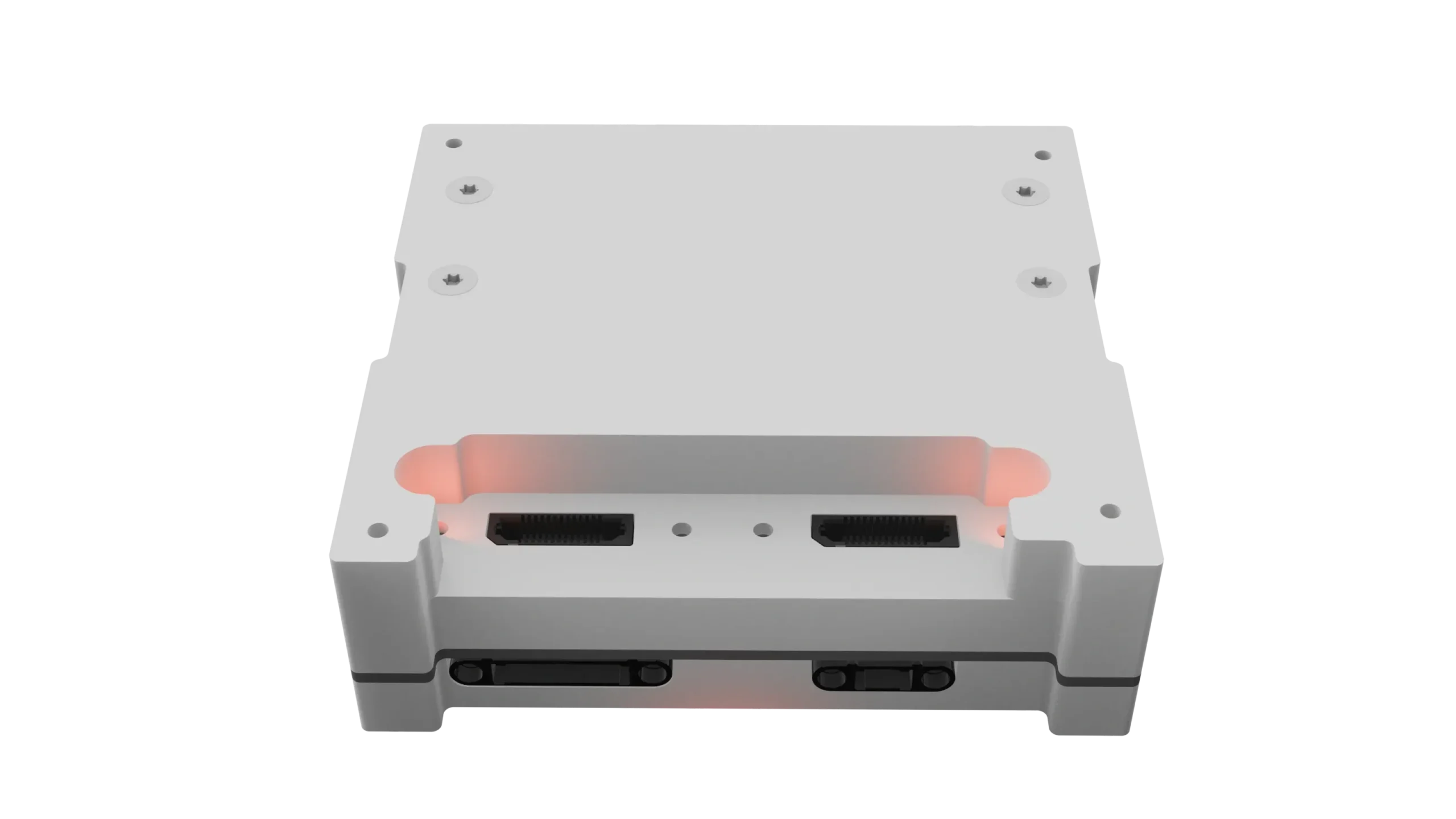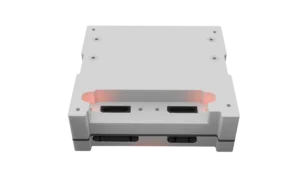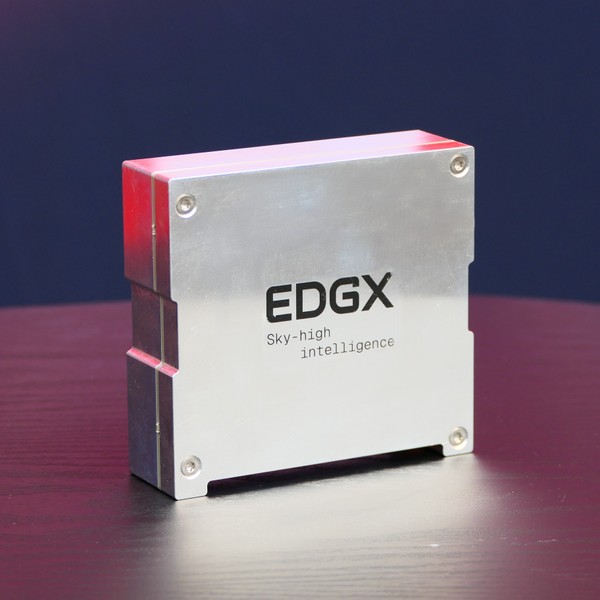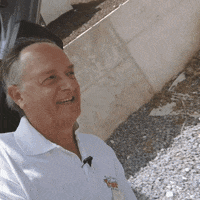Frangipani
Top 20
The EDGX team will be presenting their NVIDIA Jetson Orin-based DPU designed for LEO (Low Earth Orbit) missions, which they have now officially named Sterna, at SmallSat (Small Satellite Conference) in Salt Lake City from 10-13 August. The EDGX DPU aka Sterna is being offered with an optional neuromorphic BrainChip Akida add-on (cf. https://satsearch.co/products/edgx-dpu), although strangely this option appears not to be mentioned anywhere on the revamped EDGX website so far.
View attachment 89427
#smallsat2025 #edgx #spacetech #satelliteai #obdp #inorbitprocessing #smallsatconference #sternadpu | EDGX
🚀 EDGX at Small Satellite Conference 2025 🚀 We’ll be present at this year’s Small Satellite Conference (SmallSat) in Salt Lake City. If you're attending and exploring how to push the boundaries of onboard data processing, let’s connect. We'll bring along the EDGX Sterna DPU, our...www.linkedin.com
I took the following screenshots exactly a week ago, on 2 August. When I just revisited https://www.edgx.space/, the website shows up largely as black, so maybe they are currently working on it in preparation for SmallSat, which starts on Sunday.
Today’s countdown to the launch of what I presume to be the first of the three planned missions should accordingly read 193 days (instead of 200 days as per screenshot), which would give us 18 February 2026 as the scheduled launch date for Sterna first acquiring flight heritage…
View attachment 89429
View attachment 89433
View attachment 89431
View attachment 89432
View attachment 89434
View attachment 89435 View attachment 89436 View attachment 89437
View attachment 89438
Speaking of EDGX - they just closed a €2.3 million funding round:

EDGX sluit een financieringsronde van € 2,3 miljoen af om AI-computing aan boord van satellieten te stimuleren | PMV
In de categorie beloftevolle ondernemers zoomt De Tijd vandaag terecht in op Nick Destrycker en Wouter Benoot, de oprichters van de Gentse ruimtevaartstart-up EDGX. EDGX bouwt AI-computersystemen die aan boord van satellieten zeer veel data kunnen verwerken vooraleer naar de aarde te sturen en...www.linkedin.com
View attachment 89440
View attachment 89441
EDGX sluit een financieringsronde van € 2,3 miljoen af om AI-computing aan boord van satellieten te stimuleren
8 aug 2025
De financiering zal de missie van EDGX versnellen om ’s werelds snelste AI-aangedreven edge-computers voor satellietconstellaties te leveren, waardoor snelle en efficiënte gegevensverwerking vanuit de ruimte mogelijk wordt.
De Belgische ruimtevaartstartup EDGX heeft een seed-financieringsronde van € 2,3 miljoen afgesloten om de commercialisering te versnellen van EDGX Sterna, de volgende generatie edge AI-computer voor satellieten.
De startup heeft ook een overeenkomst gesloten met een satellietoperator ter waarde van € 1,1 miljoen en kan nu al plannen aankondigen voor een demonstratie in de ruimte tijdens een SpaceX Falcon 9-missie in februari 2026.
De financieringsronde werd mee geleid door het imec.istart future fund, met deelname van het Flanders Future Tech Fund, dat wordt beheerd door de Vlaamse investeringsmaatschappij PMV. EDGX heeft ook verdere financiering aangetrokken van bestaande investeerder imec.istart, Europa’s best gerangschikte universiteitsgebonden accelerator.
De EDGX Sterna-computer is een krachtige gegevensverwerkingseenheid (DPU) die wordt aangedreven door NVIDIA-technologie. Deze biedt de rekenkracht en AI-versnelling die nodig zijn om snel en efficient data te verwerken aanboord van sattelieten. Dit maakt een einde aan de traditionele bottleneck waarbij enorme hoeveelheden ruwe gegevens naar de aarde moeten worden gestuurd voor verwerking, waardoor satellietoperatoren snellere, efficiëntere en datagestuurde diensten kunnen leveren.
De Sterna-computer van EDGX wordt aangedreven door hun SpaceFeather-softwarestack, die is gebouwd voor autonome, veerkrachtige en upgradebare satellietoperaties. Deze omvat een ruimtebestendig Linux-besturingssysteem met volledige traceerbaarheid, een speciaal toezichtsysteem voor autonome gezondheidsmonitoring, detectie en herstel van stralingsfouten, en een applicatieframework in een baan om de aarde voor het implementeren van nieuwe mogelijkheden na de lancering. Samen maken SpaceFeather en Sterna slimmere, flexibelere missies mogelijk met minder downtime, lagere kosten en snellere oplevering van data aan de eindgebruikers.
De techniek en het ontwerp van EDGX combineren commerciële AI-versnelling met betrouwbaarheid van ruimtevaartkwaliteit, waardoor exploitanten van satellietconstellaties kunnen beschikken over een niveau van rekenkracht aan boord dat voordien niet realiseerbaar was. Klanten gebruiken de Sterna DPU van EDGX en de bijbehorende SpaceFeather-software voor verschillende toepassingen.
Voor spectrum monitoring maakt Sterna krachtige verwerking in de ruimte mogelijk om radiosignalen te lokaliseren en te classificeren, en om dynamische spectrumkaarten te genereren. Dit is een essentiële capaciteit die satellietoperatoren helpt om in real-time te begrijpen hoe frequenties worden gebruikt, interferentie te vermijden en bandbreedte efficiënter toe te wijzen om optimale communicatiediensten te leveren.
Op het gebied van aardobservatie ondersteunt Sterna intelligente surveillance en verkenning (ISR) door rechtstreeks aan boord hoge-resolutiebeelden te analyseren. Dit betekent dat satellieten objecten zoals schepen, voertuigen of infrastructuur onmiddellijk kunnen detecteren en markeren, en kunnen reageren op tijdgevoelige gebeurtenissen zoals overstromingen, bosbranden of aardbevingen. Het resultaat: snellere beslissingen, efficiëntere missies en levensreddende informatie die passieve observatie omzet in realtime situationeel bewustzijn.
Sterna ondersteunt ook 5G en 6G vanuit de ruimte. Door de verwerkingscapaciteiten van basisstations naar de ruimte te verplaatsen kunnen satellieten rechtstreeks deelnemen aan mobiele netwerken van de volgende generatie. Dit maakt de weg vrij voor naadloze directe connectiviteit met apparaten en levert supersnel internet aan afgelegen, achtergestelde of door rampen getroffen gebieden waar traditionele infrastructuur tekortschiet.

Naast de demonstratie in een baan om de aarde in februari staan er al twee verdere vluchten gepland voor 2026 en EDGX positioneert zich snel als leider op het gebied van AI ruimte-infrastructuur.
In een reactie op het nieuws zei Nick Destrycker, oprichter en CEO: “Klanten wachten niet op vluchtvalidatie, ze tekenen nu al. Met een volledig lanceringsmanifest, gegarandeerde commerciële contracten en onze eerste missie aanboord van een Falcon 9 rakket van SpaceX, stelt deze financiering ons in staat om op te schalen om te voldoen aan de vraag naar realtime informatie vanuit de ruimte.”
Wouter Benoot, oprichter en CTO van EDGX, zei: “Van nul naar honderd gaan, all-in, bij een ruimtevaartstartup is ambitieus. Die mentaliteit meenemen in de ontwikkeling van Sterna betekende nieuwe uitdagingen, voortdurend leren, maar ook echte vooruitgang. Wat het laat slagen is het team. Elke ingenieur brengt nieuwe ideeën, een drang om de ruimte te begrijpen en een passie om het te realiseren. We bouwen een subsysteem dat de volgende generatie satellieten aandrijft.”
Roald Borré, hoofd Venture Capital en lid van het uitvoerend comité bij PMV, zei: “Deze financieringsronde stelt ons in staat om het sterke team van EDGX te ondersteunen bij het op de markt brengen en verder ontwikkelen van veelbelovende Vlaamse technologie. EDGX is een van de weinige Europese spelers die een product aanbiedt dat krachtig, toegankelijk en robuust is, waardoor het unieke voordelen biedt in de snelgroeiende markt voor edge computing in de ruimte, niet in het minst wat betreft het versterken van de technologische positie van Europa in een strategische sector als ruimtevaart.”
Kris Vandenberk, managing partner bij imec.istart future fund, zei: “EDGX vertegenwoordigt precies het soort transformatieve infrastructuur waarnaar we op zoek zijn. De ruimtevaartindustrie kampt met een fundamentele bottleneck: we genereren enorme hoeveelheden data in een baan om de aarde, maar gebruiken nog steeds verouderde ‘store and forward’-architecturen. EDGX lost dit op door AI-aangedreven edge computing rechtstreeks in de ruimte te brengen, waardoor satellieten gegevens in realtime kunnen analyseren en erop kunnen reageren in plaats van te wachten op verwerking op de grond.”

Over EDGX
EDGX is een Belgisch ruimtevaartbedrijf met als missie ’s werelds snelste edge computers voor satellieten te leveren. Het vlaggenschipproduct, EDGX Sterna, is een krachtige AI-gegevensverwerkingseenheid op basis van de NVIDIA Jetson Orin, die realtime gegevensverwerking aan boord in een baan om de aarde mogelijk maakt. EDGX bedient de markten voor satellietcommunicatie/telecommunicatie, aardobservatie en in-orbit servicing in commerciële, overheids- en defensiesegmenten, met een bijzondere focus op het mogelijk maken van AI en krachtige gegevensverwerking op schaal in satellietconstellaties. EDGX is opgericht in 2023, heeft zijn hoofdkantoor in Gent, België, en zal in februari 2026 zijn eerste demonstratie in een baan om de aarde lanceren met een SpaceX Falcon 9.
www.edgx.space
press@edgx.space
Translation into English by Google Translator:
EDGX closes €2.3 million funding round to boost AI computing onboard satellites
August 8, 2025
EQUITY INVESTMENTS
VENTURE CAPITAL
The funding will accelerate EDGX's mission to deliver the world's fastest AI-powered edge computers for satellite constellations, enabling fast and efficient data processing from space.
Belgian space startup EDGX has closed a €2.3 million seed funding round to accelerate the commercialization of EDGX Sterna, its next-generation edge AI computer for satellites.
The startup has also signed a €1.1 million deal with a satellite operator and can already announce plans for an in-space demonstration during a SpaceX Falcon 9 mission in February 2026.
The funding round was co-led by the imec.istart future fund, with participation from the Flanders Future Tech Fund, which is managed by the Flemish investment company PMV. EDGX has also attracted further funding from existing investor imec.istart, Europe’s top-ranked university-based accelerator.
The EDGX Sterna computer is a high-performance data processing unit (DPU) powered by NVIDIA technology. It provides the computing power and AI acceleration needed to quickly and efficiently process data onboard satellites. This eliminates the traditional bottleneck of sending massive amounts of raw data back to Earth for processing, enabling satellite operators to deliver faster, more efficient, and data-driven services.
EDGX's Sterna computer is powered by its SpaceFeather software stack, built for autonomous, resilient, and upgradeable satellite operations. This includes a space-hardened Linux operating system with full traceability, a dedicated monitoring system for autonomous health monitoring, radiation fault detection and recovery, and an in-orbit application framework for implementing new capabilities after launch. Together, SpaceFeather and Sterna enable smarter, more flexible missions with less downtime, lower costs, and faster data delivery to end users.
EDGX's engineering and design combine commercial AI acceleration with spacecraft-grade reliability, enabling satellite constellation operators to access previously unattainable levels of onboard computing power. Customers are using EDGX's Sterna DPU and its associated SpaceFeather software for a variety of applications.
For spectrum monitoring, Sterna enables powerful space-based processing to locate and classify radio signals and generate dynamic spectrum maps. This is a critical capability that helps satellite operators understand in real time how frequencies are being used, avoid interference, and allocate bandwidth more efficiently to deliver optimal communication services.
In Earth observation, Sterna supports intelligent surveillance and reconnaissance (ISR) by analyzing high-resolution imagery directly on board. This means satellites can immediately detect and tag objects such as ships, vehicles, or infrastructure, and respond to time-sensitive events like floods, wildfires, or earthquakes. The result: faster decisions, more efficient missions, and life-saving information that transforms passive observation into real-time situational awareness.
Sterna also supports 5G and 6G from space. By moving base station processing capabilities into space, satellites can participate directly in next-generation mobile networks. This paves the way for seamless direct connectivity to devices, delivering high-speed internet to remote, underserved or disaster-affected areas where traditional infrastructure falls short.
View attachment 89443
“With a full launch manifest, secured commercial contracts, and our first mission aboard a SpaceX Falcon 9 rocket, this funding allows us to scale to meet the demand for real-time information from space.”
NICK DESTRYCKER, FOUNDER AND CEO EDGX
In addition to the orbital demonstration in February, two further flights are already planned for 2026, and EDGX is quickly positioning itself as a leader in AI space infrastructure.
Commenting on the news, Nick Destrycker, founder and CEO, said: “Customers aren’t waiting for flight validation; they’re signing now. With a full launch manifest, secured commercial contracts, and our first mission aboard a SpaceX Falcon 9 rocket, this funding allows us to scale to meet the demand for real-time information from space.”
Wouter Benoot, founder and CTO of EDGX, said: “Going from zero to 100, all-in, at a space startup is ambitious. Bringing that mindset to Sterna’s development meant new challenges, continuous learning, but also real progress. What makes it work is the team. Each engineer brings new ideas, a drive to understand space, and a passion to make it a reality. We’re building a subsystem that will power the next generation of satellites.”
Borré, Head of Venture Capital and Member of the Executive Committee at PMV, said: “This funding round enables us to support EDGX’s strong team in bringing promising Flemish technology to market and further developing it. EDGX is one of the few European players offering a product that is powerful, accessible, and robust, giving it unique advantages in the rapidly growing space edge computing market, not least in terms of strengthening Europe’s technological position in a strategic sector like space.”
Kris Vandenberk, Managing Partner at imec.istart Future Fund, said: “EDGX represents exactly the kind of transformative infrastructure we are looking for. The space industry faces a fundamental bottleneck: we generate enormous amounts of data in orbit, yet still use outdated ‘store and forward’ architectures. EDGX solves this by bringing AI-powered edge computing directly into space, enabling satellites to analyze and act on data in real time, instead of waiting for processing on the ground.”
View attachment 89442
About EDGX
EDGX is a Belgian space company with a mission to deliver the world's fastest edge computers for satellites. Its flagship product, EDGX Sterna, is a powerful AI data processing unit based on the NVIDIA Jetson Orin, enabling real-time onboard data processing in orbit. EDGX serves the satellite communications/telecommunications, Earth observation, and in-orbit servicing markets across commercial, government, and defense segments, with a particular focus on enabling AI and high-performance data processing at scale in satellite constellations. Founded in 2023, EDGX is headquartered in Ghent, Belgium, and will launch its first in-orbit demonstration in February 2026 aboard a SpaceX Falcon 9.
www.edgx.space
press@edgx.space
Here is an article published yesterday about our Belgian partner EDGX, their Sterna DPU, designed for smallsats and powered by NVIDIA Jetson Orin NX technology, and its first launch into low earth orbit planned for early next year.
The author also mentions that despite the lack of flight heritage, the start-up from Ghent has already secured one large customer deal worth over € 1 million as well as two smaller customers, and that EDGX has identified three key use cases for their space-based edge compute platform:
“EdgX formed a development agreement with the European Space Agency in early 2024 to define an onboard neuromorphic, Data Processing Unit (DPU) tailored for satellite communication constellations in Low Earth Orbit (LEO).
It has a demo launch and flight planned for early 2026 on SpaceX’s Falcon 9, and says it has one large customer deal worth over EUR1 million and two smaller customers already – that’s unusual for a company with no space flight heritage, Destrycker adds.
The company has identified three key use cases for its edge compute device. One is to enable on-board AI processing for spectrum analysis and resource allocation. Another is earth observation and surveillance use cases, and the third is for satellite-based communications, including cellular NTN.”

EDGX aiming high with edge compute platform for NTN - The Mobile Network
It's edge compute, but not as we know it. Belgian start-up reveals plans to enable 5G NTN with space-based edge compute platform.
the-mobile-network.com
EdgX aiming high with edge compute platform for NTN
By Keith Dyer 3 September 2025
It's edge compute, but not as we know it. Belgian start-up reveals plans to enable 5G NTN with space-based edge compute platform.
A Belgian start-up says it has developed an on-board computing platform for satellites that can support 5G base stations and AI workloads in space.
The company, EdgX has developed the Sterna computer – or Data Processing Unit – to provide in-orbit compute and AI processing capabilities.
“We’re focussed on developing the world’s fastest edge compute service on board satellites,” says CEO Nick Destrycker. The device uses Nvidia’s Jetson Orin NX 16GB module, manufacturing it within specially designed hardware to withstand vibration, harsh thermal and vacuum conditions and radiation effects. EdgX also developed its own software operating system to enable on-board updating and software-defined operations, for example to be able to detect and recover from events such as particle radiation without a full reboot.
EdgX formed a development agreement with the European Space Agency in early 2024 to define an onboard neuromorphic, Data Processing Unit (DPU) tailored for satellite communication constellations in Low Earth Orbit (LEO).
It has a demo launch and flight planned for early 2026 on SpaceX’s Falcon 9, and says it has one large customer deal worth over EUR1 million and two smaller customers already – that’s unusual for a company with no space flight heritage, Destrycker adds.
The company has identified three key use cases for its edge compute device. One is to enable on-board AI processing for spectrum analysis and resource allocation. Another is earth observation and surveillance use cases, and the third is for satellite-based communications, including cellular NTN.

Co-founder and CTO Wouter Benoot
Wouter Benoot, co-founder and CTO, says that with the end use case of a regenerative gNodeB in space, you need to have processing autonomy on board the device.
“It’s impossible to for you to manage and operate everything from the ground and take care of all the data streams that are passing by, live on the spot. For example if you want a service that is really resilient against interference, as the spectrum is more and more crowded, then you have to move decision making on board.”
Benoot said that EdgX is seeing end customers interested in being able to do spectrum monitoring and intelligent radio resource allocation, but finding that the traditional space network infrastructure is not built to be open.
Cellular 5G NTN specifications are changing that, as is the concurrent drive towards developing RAN functions that work in containerised platforms. Then the push towards AI-RAN is also beneficial, with its concept of placing AI compute resources near to or at a cell site.
EdgX’s goal is to leave the lower PHY layer alone, but to run upper layer intelligence and processing on its DPU, with an integration between the two.
The driver for that new upper layer platform is that it is too difficult to engineer current FPGA-based systems to integrate well with AI.
“At the upper level layers, programming the entire stack in FPGA not a fun challenge. That’s where the DPU comes in, integrating high performance CPU and GPU AI core processing to alleviate those use cases and tie it into the infrastructure.”
“Our idea is to have a functional split on board where the lower level PHY layers are on FPGA processors and Sterna takes care of the upper layers where intelligence needs to happen. Because we are a fully Software Defined computer, we can play into third-party application software stacks as know that most satellite operators already have a preference for the type of software stack that they want to work with.”
Benoot says EdgX is already carrying out demonstrators with Open RAN software stacks, name-checking the likes of srsRAN, with that functional split running on the FPGA.
“Our goal is an in-orbit demo that ties AI use cases nicely into that computation stack, allocating resources go around interference, or processing earth observation to improve satellite services.”
EdgX recently closed a €2.3 million seed funding round co-led by the imec.istart future fund and, with participation from the Flanders Future Tech Fund, managed by the Flemish investment company PMV.
I couldn’t help notice that the word “neuromorphic” only comes up once in that article, but neither BrainChip nor Akida get referenced at all:
“EdgX formed a development agreement with the European Space Agency in early 2024 to define an onboard neuromorphic, Data Processing Unit (DPU) tailored for satellite communication constellations in Low Earth Orbit (LEO).”
I then revisited SatSearch, which had listed Akida as an optional neuromorphic add-on under the EDGX DPU’s “Key Features” back in May:
The EDGX DPU, based on an NVIDIA Jetson Orin NX and designed for LEO (Low Earth Orbit) missions, can now be sourced through https://satsearch.co/ - with an optional neuromorphic BrainChip Akida add-on:

Happy to welcome EDGX as a satsearch trusted supplier. Introducing the EDGX DPU, a compact, powerful and modular AI processing system purpose-built for smallsats — and hardened for space. 🔹… | Narayan Prasad
Happy to welcome EDGX as a satsearch trusted supplier. Introducing the EDGX DPU, a compact, powerful and modular AI processing system purpose-built for smallsats — and hardened for space. 🔹 Powered by NVIDIA Jetson Orin NX, this DPU delivers 157 TOPS of AI compute in a <1 kg, 0.5U form...www.linkedin.com
View attachment 84896
View attachment 84897 View attachment 84898
EDGX Sterna DPU - Onboard AI Compute powered by NVIDIA | satsearch
The EDGX Sterna DPU is the most optimal earth-like AI processing system hardened to scale in space. Powered by NVIDIA Jetson Orin NX technology, this DPU is designed for powerful, energy-efficient and scalable onboard AI computing for smallsats.satsearch.co
View attachment 84899 View attachment 84900

the global marketplace for the space industry | satsearch
The global marketplace for space, satsearch features space products, sub-systems, components, software, and services from suppliers around the world.satsearch.co
View attachment 84901
Screenshot taken on 21 May 2025:
Turns out that strangely this add-on option has since been removed, while the remaining “Key Features” appear to be unchanged.

EDGX Sterna DPU - Onboard AI Compute powered by NVIDIA | satsearch
The EDGX Sterna DPU is the most optimal earth-like AI processing system hardened to scale in space. Powered by NVIDIA Jetson Orin NX technology, this DPU is designed for powerful, energy-efficient and scalable onboard AI computing for smallsats.
As I noted back in May, EDGX remains listed as a partner under “Enablement Partners” on the BrainChip “Partners” webpage, but has not made it to our company’s landing page - and neither have Neurobus, MulticoreWare (which to this day have never even officially been announced as a partner) and MYW.AI.
Not to mention ANT61, which doesn’t show up at all under “Partners”!
We can only hope it’s mere sloppiness…
https://thestockexchange.com.au/threads/brn-discussion-ongoing.1/post-462834











